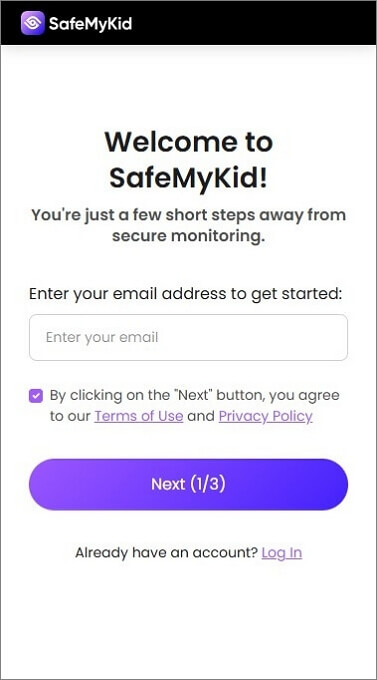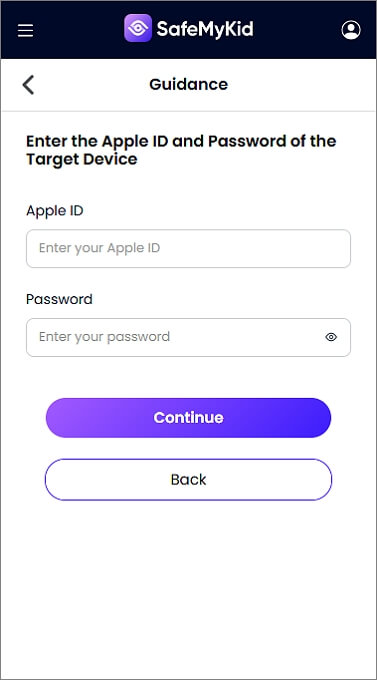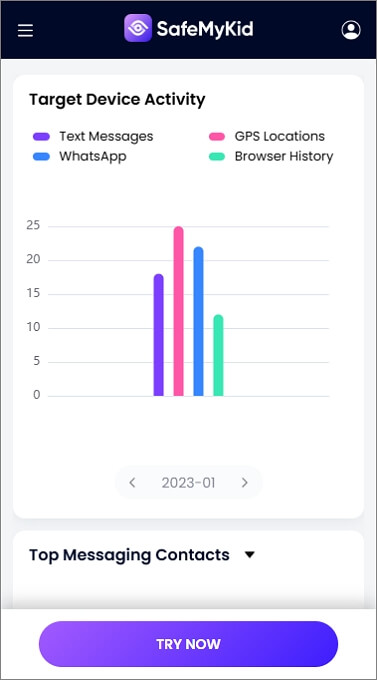The Ultimate Review of The Best Open Source Phone Trackers in 2025

Ever wondered if there's a free, transparent way to track a phone? An open source phone tracker can help you do this by giving you full control of a device without any costs.
![]()
In this guide, we'll cover what an open source phone tracker is, when its legal to use one, and walk you through all the reliable options available for different needs and skill levels.
What Is an Open Source Phone Tracker?
An open source phone tracker is a location tracking tool that offers complete access to its code. That means it's free to use and can be customized by anyone. These tools are often used to monitor kids, track lost phones, or manage small delivery fleets.
They differ from paid solutions by putting you in control. You can review the code for privacy, adjust settings as needed, and avoid being locked into expensive subscription plans.
Is It Legal to Use an Open Source Phone Tracker?
In most cases, yes, but with rules; if you're tracking your child, employee (with consent), or your own devices, you're good. But using a tracker without permission, especially on an adult's phone, may violate privacy laws.
Some countries allow tracking for parental control or company-owned phones. Others treat it more strictly. Always get proper consent before using a free and open source phone tracker, especially on someone else's device.
Why Use an Open Source Phone Tracker?
Using an open source phone tracker has several powerful advantages, especially for those who value transparency and flexibility:
- Completely free to use: No monthly fees or hidden charges.
- Customizable: Modify the source code to suit your specific tracking needs.
- Greater privacy control: No shady data collection or third-party surveillance.
- Transparent and secure: You can review the code to ensure it's safe and ethical.
- Strong community support: Active developer communities help with troubleshooting and upgrades.
- Ideal for tech-savvy users and developers: Build or scale tracking solutions for personal or business use.
They're great for people who want to tweak things for personal or business use.
How Open Source Phone Trackers Work
![]()
Open source phone trackers function by collecting location data using GPS, Wi-Fi networks, and nearby cell towers. This data is transmitted to a server, which is either self-hosted or cloud-based, and then visualized on a map interface, often with real-time updates.
What sets them apart is transparency: you can inspect the code to see how data is collected, processed, stored, and shared.
Unlike commercial trackers, open source options give you full control over privacy settings, server locations, and data retention policies, making them ideal for users who prioritize ethical and secure location tracking.
Shortcomings of Open Source Phone Trackers
While open source phone trackers offer flexibility and transparency, they are not without limitations. Here are a few potential drawbacks to keep in mind:
- Technical complexity: Most open source trackers require a solid understanding of networking, server management, and sometimes even coding to get them running properly.
- No customer support: Unlike commercial apps, there's no dedicated helpdesk. Troubleshooting is often left to community forums or documentation.
- Security concerns: If not updated regularly or if misconfigured, open source trackers can be exposed to vulnerabilities and data leaks.
- Limited features out of the box: Advanced functions like call logs, media file tracking, or geofencing alerts may be unavailable or require extra modules and setup.
- Device compatibility: Some tools may not work smoothly across all Android or iOS versions without manual tweaks or workarounds.
Despite these challenges, open source phone trackers are still an excellent option for users who prioritize control, privacy, and customization, especially when you're willing to get hands-on with the setup.
The Best Phone Tracker in 2025 Compared with Open Source Phone Trackers

Before we jump into others, let's talk about the top choice—— SafeMyKid. While not 100% open source, it combines the flexibility of open tools with the ease of use of premium apps.
SafeMyKid stands out for offering a balanced mix of functionality, privacy, and user control. It supports real-time GPS tracking, geo-fencing alerts, and even message monitoring, all from a clean, beginner-friendly dashboard.
Why SafeMyKid Is Our #1 Phone Tracker
When it comes to keeping tabs on your loved ones or managing device safety, SafeMyKid consistently tops the list. It's more than just a GPS tool; it's a full-featured, smart monitoring solution designed with real-world needs in mind. Here's why it's our top pick:
- Real-Time GPS Tracking: SafeMyKid lets you monitor the exact live location of any connected device. Whether you're tracking a child walking home from school or checking if a phone was left behind, you get instant updates with high precision on an interactive map.
- Geo-Fencing Alerts: Set custom "safe zones" like school, home, or parks. You'll be instantly notified when the device enters or exits those zones. This is perfect for ensuring routines are followed and unexpected detours are caught immediately.
- Location History Timeline: Want to know where your child or employee was at a specific time? SafeMyKid stores detailed historical routes so you can review movement patterns day by day, directly from your mobile dashboard.
- Stealth Mode Option: With optional stealth settings, SafeMyKid can operate discreetly on the target device.
- Cross-Platform Support: Compatible with both Android and iOS, SafeMyKid doesn't force you into a single ecosystem.
- App and Web Activity Monitoring: Beyond just GPS, SafeMyKid shows which apps are being used and which websites are visited. This is ideal for ensuring children aren't accessing harmful content or spending too much time on social media.
- Call and Message Logs: View recent call logs, contact names, and message summaries,which give you insights into who the phone owner is communicating with.
- Deleted Message Recovery: Accidentally deleted messages? SafeMyKid can recover deleted chats and media from Messenger, WhatsApp, and other platforms without needing a physical connection to the device or a computer.
- Social Media Monitoring: Track activity across popular platforms like Instagram, Snapchat, and Facebook. See who's sending messages, sharing content, or interacting, so you can detect suspicious behavior early.
- No Rooting or Jailbreaking Required: SafeMyKid runs without compromising the device's warranty or security. All tracking and recovery functions work without rooting Android or jailbreaking iPhones.
- Multi-Device Dashboard: Manage several devices from a single account. Whether you're a parent of multiple kids or a small business monitoring field staff, SafeMyKid scales with your needs.
- Easy Setup & Intuitive Interface: With step-by-step instructions and a clean dashboard, even non-tech-savvy users can set up and start tracking within minutes——nocomplicated software installations required.
SafeMyKid is not just a phone tracker; it's a reliable safety tool that gives you peace of mind and full situational awareness at all times.
Step-by-Step Guide on How to Use SafeMyKid Phone Tracker
Getting started with SafeMyKid is quick and doesn't require any technical expertise. Whether you're a parent, employer, or someone who needs reliable location tracking, this guide walks you through the entire setup process for both Android and iOS devices.
Step-by-Step Guide on How to Track an iPhone in Real Time
Step 1. Create an Account on The SafeMyKid Website
If you haven't already, sign up for an account via SafeMyKid's official site.

Step 2. Enter The iCloud Credentials of The Target Device
To track an iPhone without physical access, input the iCloud ID and password of the device you wish to monitor.

Step 3. Track an iPhone in Real Time
After verification, SafeMyKid will sync with the iCloud account. You'll be able to see the device's live location, message activity (including deleted content), and more.

Step-by-Step Guide on How to Track an Android Phone in Real Time
Step 1. Sign up for a Free Account at SafeMyKid Website
Visit SafeMyKid's official website and create a free account using your email.

Step 2. Install The SafeMyKid App
On the target Android phone, download the SafeMyKid app. Follow the on-screen instructions to allow necessary permissions like location, usage access, and notification access.

Step 3. Track an Android Phone in Real Time
Once installed, open your SafeMyKid dashboard from your own device or computer. You'll be able to monitor live location, route history, app activity, messages, and more.

While not fully open source, SafeMyKid is the most secure and beginner-friendly way to track a phone with transparency. Its hybrid model blends flexibility with convenience, making it ideal for families and beginners who don't want to host servers or write code.
5 Most Popular Open Source Phone Trackers in 2025
If you're looking for a flexible and transparent way to monitor devices without depending on costly commercial software, open source phone trackers are your best bet. Below are the 5 most popular open source phone trackers in 2025 that combine efficiency with transparency.
1. BloodHound (GitHub)
![]()
BloodHound is a highly customizable open source phone tracker hosted on GitHub. Written in Python, it integrates with Google APIs and other mapping libraries to track phone location data with detailed visualization.
It's particularly suited for developers and cybersecurity professionals who need to trace or analyze location behavior over time.
While it isn't plug-and-play, the flexibility it offers makes it perfect for building tailored phone tracking systems from scratch or integrating it into larger monitoring frameworks.
Pros:
- Fully open source with public access on GitHub
- Ideal for custom GPS analysis and forensic tracking
- Integrates with mapping tools like Google Maps and Leaflet
Cons:
- Requires coding knowledge to configure and use
- Not user-friendly for non-developers
2. Traccar
![]()
Traccar is a professional-grade GPS tracking platform that is open source and supports both mobile and hardware trackers. It provides real-time tracking, alert systems, trip history, and reports, all through a user-friendly web dashboard.
Traccar also supports over 2,000 GPS devices and comes with mobile apps for both Android and iOS. It's suitable for individual users, families, and businesses wanting to track vehicles, shipments, or employees with precision and full control over their data.
Pros:
- Works with both mobile phones and GPS hardware
- Real-time web-based dashboard and mobile apps
- Supports geofencing, alert rules, and history tracking
Cons:
- Requires setting up your own server (locally or in the cloud)
- Advanced features may be overwhelming for beginners
3. OpenGTS (Open GPS Tracking System)
![]()
OpenGTS is one of the earliest open source GPS tracking systems designed for commercial and enterprise use. It supports tracking multiple devices and logging data with detailed reports.
Businesses often use it for fleet tracking, employee monitoring, and logistics. Its web interface allows you to view live tracking and run detailed usage analytics.
Though it's not the easiest to set up, OpenGTS remains a top choice for large-scale deployment when long-term reliability is a priority.
Pros:
- Designed for enterprise-level GPS tracking
- Supports SMS/email alerts and web reporting
- Free to use and adapt for custom needs
Cons:
- Complex installation and setup process
- Requires technical knowledge and server hosting
4. OwnTracks
![]()
OwnTracks is a privacy-first open source location tracking tool for mobile devices. It lets you record and share your own location and view it in real-time, all while keeping your data private through self-hosting.
OwnTracks supports both MQTT and HTTP protocols and works on Android and iOS. You can integrate it with home automation tools like Home Assistant for smarter tracking. It's ideal for those who care about digital privacy and want full ownership of their data.
Pros:
- Keeps all location data private on your own server
- Cross-platform support (Android/iOS)
- Compatible with smart home systems
Cons:
- Limited interface and features
- Setup requires knowledge of self-hosting and networking
5. Navit
![]()
Navit is a hybrid GPS navigation and location tracking app that is open source and supports offline maps through OpenStreetMap.
While it's primarily used for navigation, it has built-in logging and GPS tracking features that make it useful for route recording and passive monitoring. It runs on Android, Linux, and embedded systems, and is frequently used in car infotainment setups or open-source dashboards.
Pros:
- Free navigation and GPS tracking in one package
- Offline maps with no data usage
- Cross-platform: Android, Linux, and embedded devices
Cons:
- Not specialized in phone tracking
- The userinterface is outdated and unintuitive
Security and Privacy Tips to Consider When Using Open Source Phone Trackers
Open source doesn't automatically guarantee safety. To protect yourself and others, always:
- Change default admin passwords
- Secure your hosting environment (if applicable)
- Keep your tracker software regularly updated
- Inform and obtain consent from the person being tracked
Even the best open source phone tracker can pose legal issues if used without proper consent. Always prioritize ethical use.
If you're looking for a safer, more beginner-friendly option, consider SafeMyKid. While it's not open source, it balances strong privacy, legal compliance, and user-friendly features, making it ideal for parents, guardians, and professionals who need hassle-free and responsible tracking.
FAQs on Open Source Phone Trackers
Before we wrap things up, let's take a look at some of the most common questions people have about using an open source phone tracker. These answers will help clarify a few extra points that didn't quite fit into the main sections above.
1. Can I customize the features of an open source phone tracker for specific needs?
Yes, one of the key advantages of open source phone trackers is their customizability. Developers can modify the source code to add or remove features based on specific use cases. However, this requires coding knowledge and a basic understanding of GPS and networking protocols.
2. How secure is the data stored by an open source phone tracker?
Data security depends on how the tracker is implemented. Open source tools allow you to control where and how data is stored. However, without proper security measures like HTTPS, encryption, and authentication, your data may be at risk.
3. Are there open source phone trackers that work without installing an app on the target phone?
Some trackers allow monitoring through iCloud credentials without installing any app. However, for most open source trackers, especially on Android, app installation is required. Completely app-free solutions are rare in the open source space due to privacy laws and technical limitations.
4. Do open source trackers support geofencing, and how does it work?
Yes, several open source trackers offer geofencing features, which allow you to set virtual boundaries on a map. When the tracked device enters or leaves the designated area, you receive an alert.
5. Can I integrate an open source phone tracker with other systems or apps?
Most open source trackers offer APIs or data export functions, allowing you to integrate them with CRMs, analytics tools, or home automation systems.
6. Is there a way to test an open-source phone tracker before full deployment?
Yes, most open source phone trackers offer demo modes or allow local testing environments. You can simulate GPS input or use test devices to evaluate the tracker's features, performance, and compatibility before scaling it for full use.
Conclusion
An open source phone tracker offers a smart way to stay in control without spending a fortune. These tools are perfect for users who value privacy and want to tailor their tracking experience.
Whether you're a tech-savvy user building a custom setup or a parent wanting a simple, reliable solution to keep your child safe, there's something for everyone. And if you want the perfect balance of power and ease of use, SafeMyKid is the top choice.

